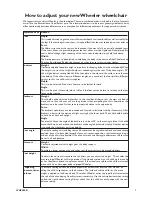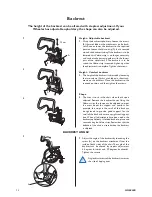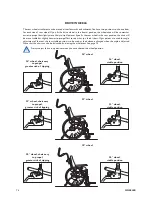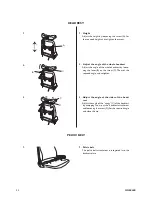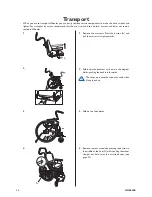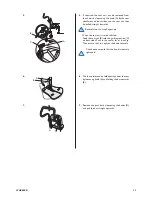
12
WHEELER
13
WHEELER
The whole seat unit can be angled backwards to obtain a more relaxed position (resting position), or forwards to
obtain a more active seating position for when the user is eating or moving. There are two different types of seat
angle adjustment, mechanical and carer-operated.
Seat angle
MECHANICAL SEAT ANGLE ADJUSTMENT
The angle of the seat can be adjusted from -4 to +10 degrees.
1.
Insert the Allen key into the hole in the centre of
the rod (B). Loosen the nuts (C) using a spanner.
Rotate the Allen key to obtain the required seat
angle. Tighten the nuts.
Hand-operated
1.
Using a gas piston, you can adjust the angle of the
whole seat unit by squeezing the left-hand lever (D)
upwards, holding it pressed upwards and moving
the backrest away from you or towards you until
the required position is obtained. Then release the
lever.
Foot-operated
2.
Press the foot pedal and adjust the angle of the
whole seat unit by taking hold of the push handles
and moving the backrest towards or away from
you until you obtain the required position. Then
release the pedal.
Ensure that no one changes the angle of the
chair by accident, e.g. when the child is play-
ing.
If the seat is angled forwards and the backrest is
angled backwards there is a risk that the user will
slide out of the chair.
Risk of trapping between foot plate and castor
when the seat is angled forward.
CARER-OPERATED ANGLE ADJUSTMENT
The angle of the seat can be adjusted from -4 to +30 degrees.
C
C
B
1.
2.
!
D









